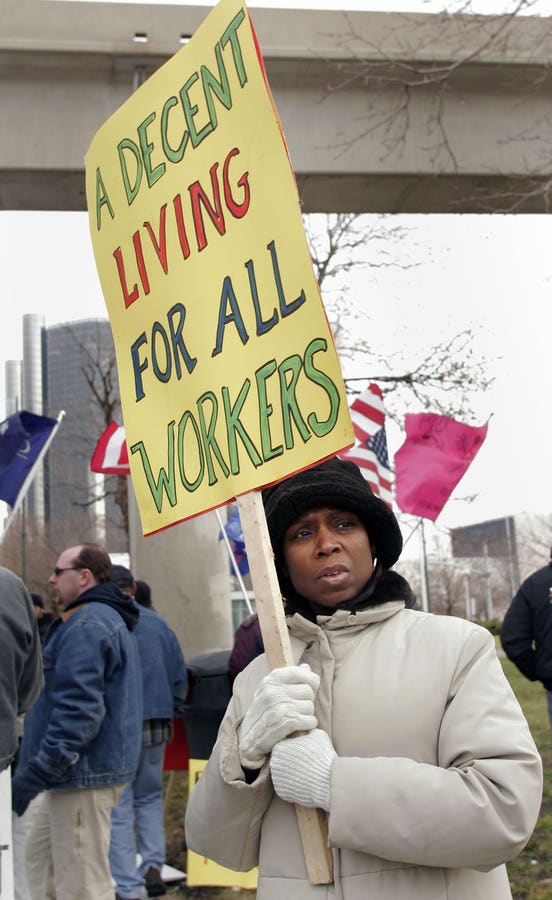The Federal Reserve continues to believe that U.S. wage growth is too high and contributing to inflation, according to recent comments from Fed Chair Jerome Powell.
The Employment Cost Index, the most commonly watched measure of labor costs to employers, rose 4.3% in Q3 of 2023 and 4.4% over the last two quarters. Assuming productivity growth at its recent trend (1.4% annually), these data suggest that labor costs are rising by 3% — above the Fed’s target of 2% but consistent with a moderately higher target advocated by economists like Paul Krugman and Olivier Blanchard.
Yet a closer look at other data over the last three months suggests that wage growth might be fairly consistent with the Fed’s 2% target. A different Bureau of Labor Statistics measure of wage growth — average hourly wages — has been rising by just 3.2% over the past three months. These data indicate the ongoing softening of the labor market, induced by two years of rising interest rates, is indeed reducing wage growth.
Why do the two measures of wage growth diverge? The ECI differs from average hourly wages for two reasons: 1) It captures benefit costs as well as wages and salaries; and 2) It holds occupations and industries in the labor market constant, and thus measures cost increases holding the structure of the labor market constant. But, in the ECI, benefit growth has recently been lower than wage growth; so, the shift of employment growth toward lower-wage occupations and industries must be causing the two measures to differ.
Apparently, high recent employment growth in industries like leisure and hospitality and in lower-wage jobs in health and elder care are moderating the overall costs of labor in the U.S. economy. And the retirements of high-wage Baby Boomers, and their replacement by younger and cheaper workers, likely reinforces this shift toward lower-wage work categories. If true, the average wage measure might be a more accurate picture of the true labor costs employers face.
And there is another factor which makes this level of U.S. wage growth look reasonable: the nation’s recently high rate of productivity growth.
Productivity growth enables wages to rise without causing inflation. For example, 2% inflation is consistent with 4% wage growth if productivity growth is also 2%, allowing for real wage growth (meaning wage growth above inflation) of 2% as well.
Unfortunately, measured productivity growth has been very volatile since the pandemic. Large layoffs during the pandemic caused productivity to briefly skyrocket, and strong employment recovery since the pandemic has created many quarters with negative growth since then.
Indeed, BLS data indicate that productivity growth declined by about 5% in the first half of 2022, as employment strongly rebounded while output growth was fairly flat. On the other hand, it has averaged more than 4% in the past two quarters.
Also, productivity growth is notoriously difficult to measure, and economists’ estimates are often biased downward. To take one well-known example, when statins successfully reduce cholesterol and heart attacks, as well as medical procedures to deal with them, this reduces measured gross domestic product and productivity growth — though society is better off because of it.
Still, combining all quarters since the beginning of the Covid-19 pandemic in 2020, measured productivity growth has averaged 1.6%. And, in the past four quarters, it has averaged 2.3%. It does not seem outrageous to suggest that productivity growth right now is above its recent trend of 1.4% and is likely closer to 2%. And, as adoption of artificial intelligence in American businesses grows, productivity growth will no doubt increase as well.
Overall, it looks like wages and labor costs are now growing at an annual rate of about 4% or less while productivity is growing about 2%, in which case workers can enjoy 2% real wage growth per year while its contribution to inflation is also 2%.
The Fed’s current pause in interest rate growth should continue, as leaders carefully monitor ongoing labor market trends. But after a number of decades in which wage growth was fairly stagnant, the bump-up in worker wages that began after the pandemic — during the Great Resignation — is welcome in its currently muted form and should be allowed to continue.
Read the full article here





